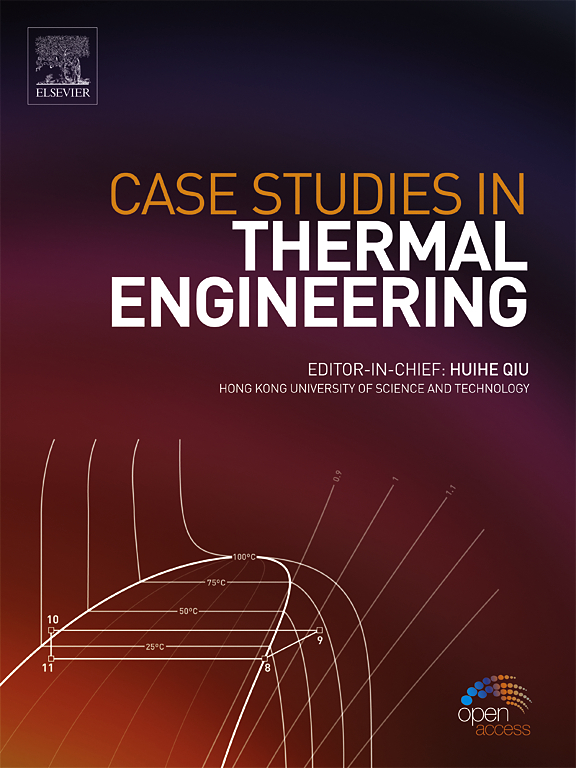High-precision reconstruction of a heat flux boundary via a programmable scanning electron beam controlled by the voltage waveform design method
IF 6.4
2区 工程技术
Q1 THERMODYNAMICS
引用次数: 0
Abstract
A scanning electron beam can be used to construct heat flux boundaries (HFBs). However, the long current response time in the deflection coil using a current control method (CCM) cause the deviation of the current waveform, potentially reducing the accuracy of the reconstructed HFB relative to the target HFB. The impact of the current response time on the reconstruction accuracy increases as the field frequency increases, and the accuracy can be reduced from 0.89 to 0.69. To shorten the current response time and improve the reconstruction accuracy, a voltage waveform design method (VWDM) is introduced as a replacement for the CCM. The result indicates that the accuracy of the HFB reconstructed by a scanning electron beam controlled by the VWDM can reach 0.91. Additionally, increasing the maximum output voltage of the power amplifier used to generate the voltage can further improve the reconstruction accuracy of the HFB with the VWDM. This study provides a new approach for the accurate construction of HFBs for rapid thermal processing, additive manufacturing and thermal assessment of hypersonic vehicles.
通过电压波形设计法控制的可编程扫描电子束高精度重建热通量边界
扫描电子束可用于构建热通量边界(HFB)。然而,使用电流控制方法(CCM)时,偏转线圈中的长电流响应时间会导致电流波形偏差,从而可能降低相对于目标 HFB 的重建 HFB 的精度。随着场频的增加,电流响应时间对重建精度的影响也会增加,精度会从 0.89 降低到 0.69。为了缩短电流响应时间并提高重建精度,引入了电压波形设计方法(VWDM)来替代 CCM。结果表明,由 VWDM 控制的扫描电子束重构的 HFB 精度可达 0.91。此外,提高用于产生电压的功率放大器的最大输出电压也能进一步提高使用 VWDM 重构 HFB 的精度。这项研究为高超音速飞行器的快速热加工、增材制造和热评估提供了准确构建 HFB 的新方法。
本文章由计算机程序翻译,如有差异,请以英文原文为准。
求助全文
约1分钟内获得全文
求助全文
来源期刊

Case Studies in Thermal Engineering
Chemical Engineering-Fluid Flow and Transfer Processes
CiteScore
8.60
自引率
11.80%
发文量
812
审稿时长
76 days
期刊介绍:
Case Studies in Thermal Engineering provides a forum for the rapid publication of short, structured Case Studies in Thermal Engineering and related Short Communications. It provides an essential compendium of case studies for researchers and practitioners in the field of thermal engineering and others who are interested in aspects of thermal engineering cases that could affect other engineering processes. The journal not only publishes new and novel case studies, but also provides a forum for the publication of high quality descriptions of classic thermal engineering problems. The scope of the journal includes case studies of thermal engineering problems in components, devices and systems using existing experimental and numerical techniques in the areas of mechanical, aerospace, chemical, medical, thermal management for electronics, heat exchangers, regeneration, solar thermal energy, thermal storage, building energy conservation, and power generation. Case studies of thermal problems in other areas will also be considered.
 求助内容:
求助内容: 应助结果提醒方式:
应助结果提醒方式:


